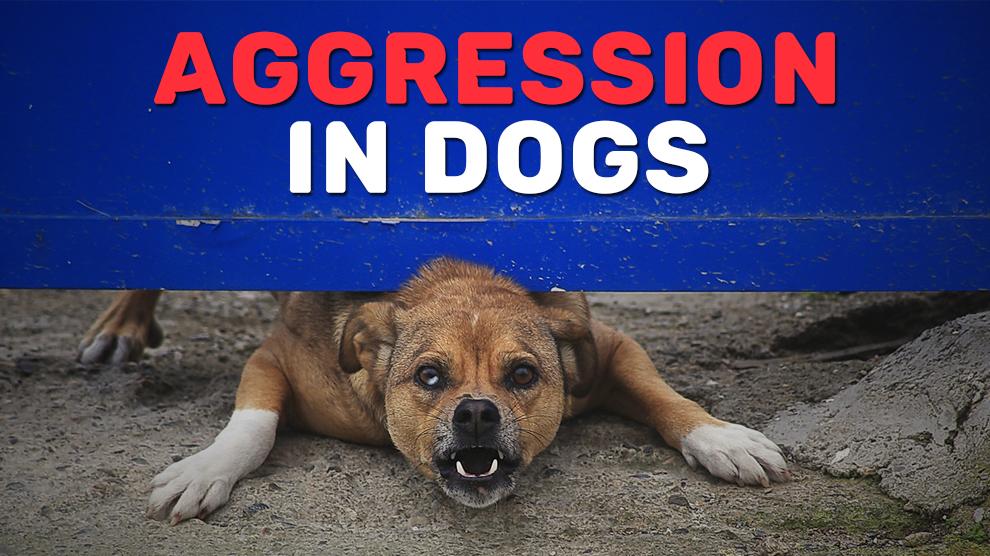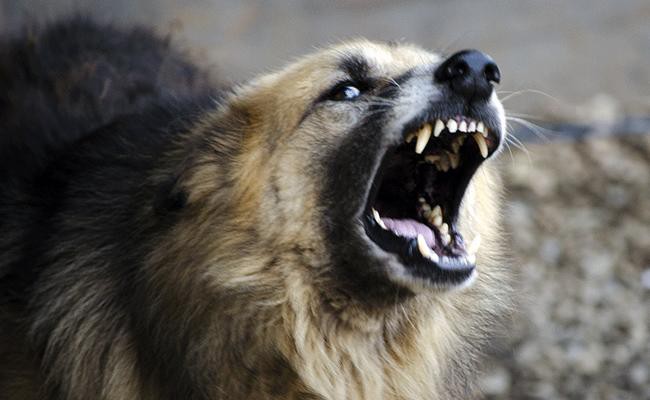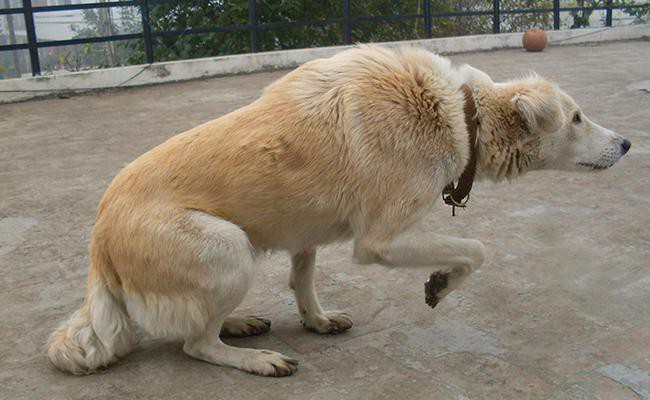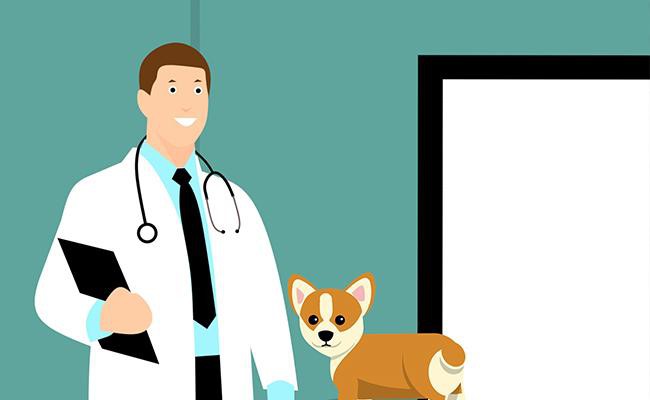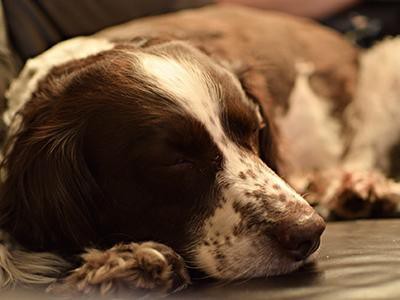- Aggression In Dogs Video
- What Is Aggression?
- Dogs Aggressive Behavior - Why it Happens?
- Basic Types Of Dog Aggression
- Aggressive Dog Behavior Training - How To Manage Aggression?
- Top 10 Aggressive Dogs
- How To Effectively Socialize An Aggressive Dog?
- How To Calm An Aggressive Dog?
- Dog Diseases That Cause Aggression In Dogs
- Can An Aggressive Dog Be Euthanized?
Dog Pregnancy Calculator And Timeline
A dog not only remains sweet, loving, and loyal but also, at times, aggressive. This is one of the leading causes of dog abandonment.
When a dog frequently bites, snaps, or growls, aggression looks imminent and aggressive dogs are common in our society.
Most dog owners prefer the services of a professional dog trainer mainly due to aggression.
It is really important to understand that not only larger breeds but, any dog breed is capable of getting aggressive.
What Is Aggression?
The term “aggression” means a range of behaviors that happen due to a host of reasons in different circumstances.
All wild animals display aggressive behavior when protecting themselves, defending their families, and guarding their surroundings.
Organisms that live and prosper in groups, including dogs and people, also employ aggression to negotiate and keep the peace.
Aggression comprises a wide spectrum of behavior that generally begins with warnings. It can also lead to an attack.
Dogs are capable enough to stop their efforts during an aggressive attack.
Aggressive dogs usually show some type of increasingly strong behaviors-
- Bite and rip
- Continuous bites in quick succession
- Bite that leads to puncture injuries
- Bite that causes a bruise
- Any bite that opens the skin
- Quick nip that’s usually scarless
- Snap
- Snarl
- Biting or showing teeth
- The dog pushes the person using her muzzle or nose
- Mouthing
- Charging or lunging forward at the person
- Throaty bark that sounds alarming
- Becoming rigid and still
Dogs may not necessarily follow this sequence and many times, dog lovers do not recognize the threatening signs before an attack.
It is usually just seconds between a bite and a warning. Bear in mind, dogs very rarely bite without giving any warning beforehand.
Dogs Aggressive Behavior - Why it Happens?
Aggressive behavior refers to any situation wherein a dog starts to show signs of a potential attack.
This, automatically includes, biting, nipping, lunging, snarling, baring teeth, growling, and becoming rigid.
- The basic step is to find out the exact reason for your dog’s aggression. There are dogs that snarl aggressively toward strangers or children. Some dogs even growl when someone disturbs them while chewing or eating a bone.
- Aggression can be towards yard material, wheels, inanimate objects, or specific animals such as cats.
- Terriers are trained to stop rodents and dogs like Rottweilers are bred to safeguard people and property. These natural instincts indicate that the responsibility is with the owners to direct the aggression in the right way through proper training.
Basic Types Of Dog Aggression
- Predatory aggression
When chasing wildlife some dogs exhibit aggression. This behavior becomes a threat when a small kid is chasing a dog playfully.
As time progresses, the dog may bite the child unintentionally without any warning.
- Sex-starved aggression
Two male dogs turn aggressive when fighting to unleash their sexual feelings on a female dog.
- Pain-related aggression
The dogs display aggression when in pain or injured.
- Redirected aggression
The dog might turn aggressive when a person intervenes in a dog fight.
- Protective aggression
It safeguards members of its family against another person or an animal. Mother dogs will do anything to protect their puppies.
- Social aggression
Some dogs work hard to gain the status of an alpha dog.
- Fear aggression
Dogs retreat when faced with fear but attacks when cornered.
- Possessive aggression
The canine protects bones, chew toys, food, or anything it considers of value.
- Frustration-response aggression
When dogs are restricted in a closed-in yard, it can cause undue aggression. They can even nip their handler.
- Defensive aggression
The dog might attack the person instead of retreating first.
- Territorial aggression
He fights to protect your home or your valuables from intruders
Aggressive Dog Behavior Training - How To Manage Aggression?
Thoroughly examining the dog and the situation surrounding the behavior proves vital. There are a lot of ways to stop hostility and make your dog calm, but you should employ the services of a professional.
Wait, Patience and time are really important.
Contact your vet
Dogs that display sudden aggressive behavior might have medical issues. A disease that causes aggression include seizures, brain tumors, epilepsy, encephalitis, and hypothyroidism.
Medication and treatment may provide big changes in your dog ’s lifestyle.
Meet a Professional Trainer
Hire a professional dog behaviorist or a trainer. This is not a minor problem and resists all temptation to fix it alone.
A qualified trainer can guide you to find out what’s troubling your dog and prescribe a plan to tackle it.
Design Your Own Plan
Positive reinforcement training methods including praise and treats are some of the effective ways to handle an aggressive dog.
Work with a dog behavioral specialist and he will guide you in difficult times.
Stop giving punishments
Punishing is a negative technique and some dogs may resort to biting to defend itself. If your dog snarls at children, take it away from them and never hit or scold them.
Medicines can work
Training alone can look incomplete. Fearful dogs need medication to control aggression. Meet your vet at the earliest and discuss all the possibilities.
Unavoidable situations
You better analyze whether your lifestyle suits your dog. If you have kids, and also if your dog snaps at them, you better act now.
The best solution is to send your dog to a new suitable home or shelter.
Risk Factors
If you are confused about living with your aggressive dog, never rush. There are plenty of factors you should consider before you actually decide to live with an aggressive dog.
These factors include
- Degree of motivation
How easy or hard it is to inspire or ease your canine during retraining.
The best method is to try behavior modification method. Altering a dog’s behavior includes rewarding him for obedient behavior. Dogs that are not too fond of treats or praise can be difficult to modify.
- Triggers
Are the surroundings that prompt your dog hard to avoid? When your dog gets aggressive while eating, stay away from her.
If you find it that much hard to move any closer when she guards her toys, then that’s something you should address.
Biting a stranger without any provocation is more dangerous than a canine who attack strangers if they cuddle her.
- Size is crucial
Large dogs are capable enough to cause more injuries and can inflict a lot more damage than small dog breeds.
- Predictability
Dogs suitable for euthanization are generally more aggressive. Some dogs give warning before biting people and it’s possible to live with dogs that are not sporadically violent.
- Age
Older dogs with aggression problem are hard to manage compared to young dogs.
- Exposure
How often your pet doggie is easily exposed to her targets can determine how fast the bad behavior can be brought under control.
Dogs that are aggressive towards children are more suitable for pet lovers without any relatives or kids.
Living with dogs that carry some sort of health issues and bites family members during medication can be bad and stressful.
- Intensity
Dogs who stop bad behavior at snapping, growling, or showing teeth are easy to live than biting dogs.
Serious wounds are dangerous compared to small scratches, bruises, and punctures.
- Bite history
Dogs with a history of bite victims are unnecessary baggage and also a recurring insurance liability.
Top 10 Aggressive Dogs
There are some dogs that are not considered to be safe even by your insurance company due to their aggressive behavior.
Almost a decade ago, a Washington Court ordered compensation of $2.2 million USD to a person who was violently attacked by violent pit bulls in Washington.
Don’t get petrified!
American Staffordshire Terriers
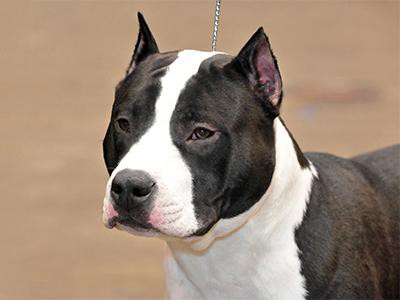
They have earned this reputation, according to experts, unfairly.
Pit Bulls are known for their goofy character. Being extremely intuitive, Pit Bulls are ready to attack if the need arises.
Staffordshire Bull Terriers
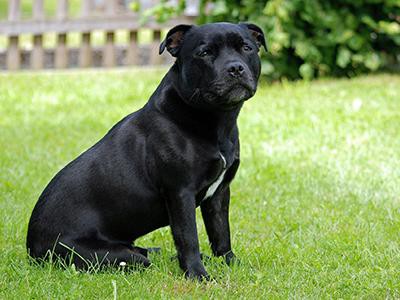
This muscular dog breed retains its tenacity and courage. A gladiator amongst dogs.
Presa Canario
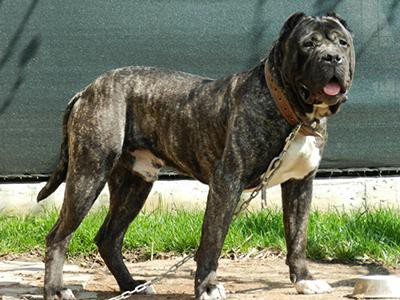
These dogs became famous for their incorruptible courage, a strong set of teeth, and little bark.
Rottweiler
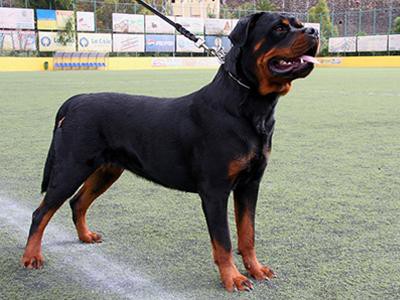
The Romans required durable, strong dogs to guard and move the herd. They developed what was now recognized as the distant parent of at present Rottweiler.
A well-socialized Rottie will never display undue aggression.
Mastiffs
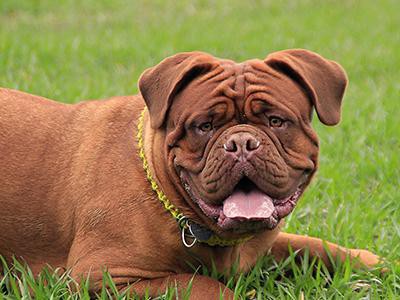
The Mastiff is dignified but also a strong savior of those these dohs hold dear. Mastiffs are excellent pets when early socialization and training is provided.
German Shepherd
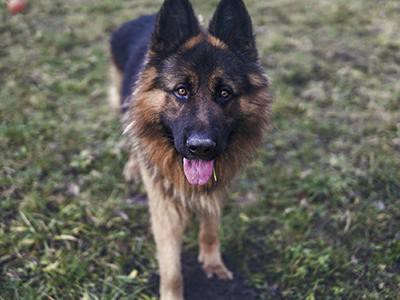
German Shepherd (Black, White, and Brown)is well-recognized for its ability, courage, and loyalty. If the need arises, the punishing fighter in him will do the rest. Even the German Shepherd mix breeds sometimes portray the character.
Chow Chow
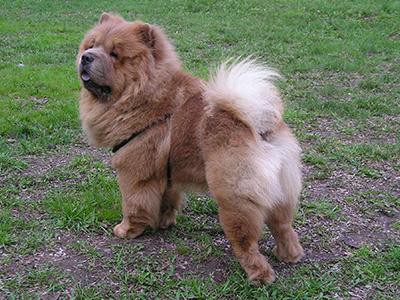
In modern times, these dogs are seen as a guard dog but history suggests Chow Chows worked as sporting dogs in old China.
Akita
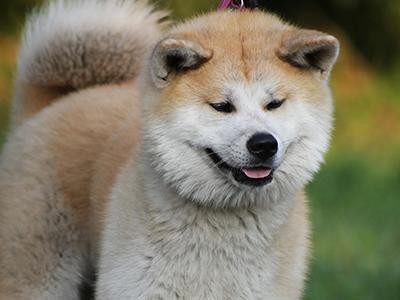
Akitas are considered as symbols of protection, good health, and substance. The Akita is quite aggressive with other pets.
Doberman Pinschers
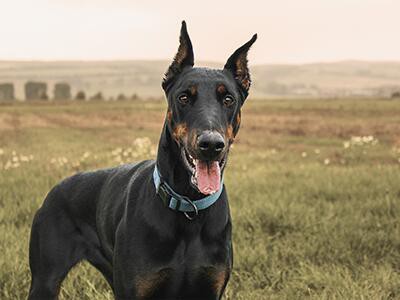
One of the strongest protection dogs, the Doberman Pinschers are a picture of intelligence combined with sleekness. Occasional aggression is the hallmarks of this breed.
Wolf-hybrids
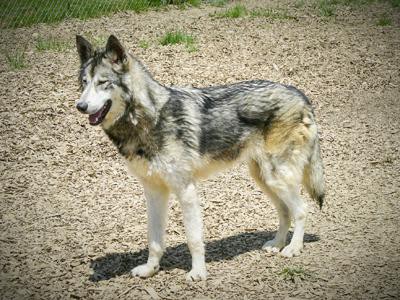
Wolfdogs or wolf-hybrids can easily retain the wild traits that make them dangerous around humans. Because of selective breeding, no one can easily predict the temperament of these hybrid dogs.
How To Effectively Socialize An Aggressive Dog?
The first method used in these dog aggression classes involves classic conditioning- the dog learns simple things.
Operant conditioning can also be used to teach dogs that their actions can earn them play, praise, or treats.
These two methods of conditioning attempt to alter the emotional trait that causes aggression in dogs instead of just dealing with the outward symptoms.
Old methods of socializing dogs
The old approach recommended altering barking and lunging with a swift pop.
This method does not produce any concrete result. He learns that getting close to other animals would invoke punishment and teaching him to handle scolding is not the right way.
A canine who has undergone punishment usually experiences stress and other physiological reactions.
Basics of Training an Aggressive Pet
Aggressive dog trainers employ the “No Free Lunch” technique. The main factor is that these dogs must follow the cue so that they can earn privilege, freedom, and right.
The dog should realize that his owner is the one and only provider of everything in his life. Trainers usually reward the dogs when they don’t find any signs of aggression or fighting.
The four most important components of a training program
- Training the dog – Display behavior not compatible with aggression
- Counter-conditioning – The method of pairing other dogs with good things
- Desensitization – Managing the violent behavior in dogs by gradually decreasing the distance
- Shaping – Reinforcing all the action dog makes in reaching the goal
Some owners also use the “Jolly Routine” developed by William Campbell, a behavior counselor.
The owner will try to use his own mood and thereby influence the dog’s behavior. This method works well on fearful canines also.
Recommended ways to socialize an aggressive dog include-
- Open Bar exercise
- Growl Classes
How To Calm An Aggressive Dog?
Calming an aggressive dog is not at all that hard. You should first learn techniques to immediately calm them and prevent any untoward incident.
These steps can help you calm your dog
- Remove them from the aggressive environment
- Talk to them gently
- Never scold or raise your voice
- Leave them alone. They will eventually feel relaxed
“Things” You Should Not Do
Please avoid this sort of behavior at all cost
- Yelling
- Scare or fear-inducing techniques
- Causing pain and thereby try to gain control
- Intimidation
- Never impose your feelings on the dog
Simple Ways to Soothe Aggression in Dogs
Try these powerful yet simple methods to calm any dog breed-
1. Use behavior modification techniques
Start by teaching some simple commands. Remain patient and positive results are bound to come.
2. Giving medicines
Medications can induce a sense of calmness and do not give these medicines without consulting a registered veterinarian.
- Buspirone
- Sertraline
- Propranolol
- Clomipramine
- Fluoxetine
- Amitriptyline
3. Environmental modifications
Environmental modifications include rerouting your dog’s walk, leaving them alone, and other ways to reduce his anxiety.
4. Vet visit recommended
When a calm dog shows signs of aggression, talk to a vet.
5. Keep treats handy
Keep treats handy during walks or put something delicious in his bowl when he turns aggressive.
6. Watch your dog’s body language
Look for small changes such as hunkering down, lowering his head, or sudden stillness.
Dog Diseases That Cause Aggression In Dogs
Sudden aggression is really upsetting and scary in dogs. The first and foremost step is to find the real cause for aggression in dogs.
It’s also essential to keep all you’re other pets, family, and friends, and yourself, completely safe.
- Fear can push any dog to turn aggressive. Never underestimate the symptoms of fear.
- Popular health problems can modify your dog’s character. Senior dogs are known to show age-related disorders. Dementia or canine cognitive dysfunction can also cause aggression in older dogs.
- Check for signs such as lethargy, weight gain, or hair loss. Hypothyroidism is the possible culprit in this scenario. If rapid mood changes or convulsions happen, it could be due to seizures.
- Trauma, thyroid issues, tumors, and hydrocephalus problem in the brain can also increase a dog’s aggressive nature.
- Loud noises can lead to aggression in dogs with ear infections.
- Pain is another reason for erratic behavior. Kindly start with a physical examination. Check for tender spots, insect stings, torn paw pads, cuts, or swelling.
- Thoroughly examine the dog’s mouth and tongue. Talk to the vet if the dog does not allow you to come closer for an examination.
- Do not ignore other signs such as loss of appetite, diarrhea, and vomiting.
Treatment for Dog Aggression
If you find your dog has changed in its personality, then it could be a serious issue.
- The vet will conduct a series of tests. Urine or blood tests will be checked to analyze the dog’s organ function and cell counts. X-ray test cannot be ruled out.
- Contact a reputed canine behavioral specialist and they will decide whether euthanasia is needed or not.
- Try to follow the no-petting and no-visitor rule as strictly as possible.
- Never remove the leash at any cost. Never risk a potential dog bite without locating the exact reason for a dog’s aggressive behavior.
Can An Aggressive Dog Be Euthanized?
There can be nothing harder than putting a dog to sleep. Euthanizing an active dog for behavioral problems is one of the most difficult things any pet lover can handle.
What are the options available before us?
- Train the dog with the help of a professional dog behaviorist
- Find a new home for your dog or re-home the dog
- Euthanize your dog
Option number three should only be considered when the other two options are not viable. Use this checklist and then decide for yourself if your dog is ready for euthanasia or not.
Risk management
The most common reason for euthanizing a dog is due to light to severe human aggression. Human aggression can include criminal considerations, liability issues, and human safety for the owners.
This is a complicated process and dog owners forget that dogs can turn aggressive due to fear or anxiety problems.
How many of you are aware that the percentage of dogs euthanized in animal shelters are much more than we all know?
Dogs are also considered for euthanization for unruly behavior, resource guarding, and separation anxiety.
Consult a qualified dog behavioral specialist and take it from there.
Physical reasons
Pain, old age, and illness are some of the well-known causes of euthanizing a dog.
The right time is when the dog owner feels that the trauma the dog undergoes is unbearable and he too feels the same.
The Bottomline
If you ever decide to euthanize a dog, please understand that you should go through a tough period of helplessness, grieving, and personal guilt.
Yes, it’s perfectly normal and you better remember that time heals everything.

